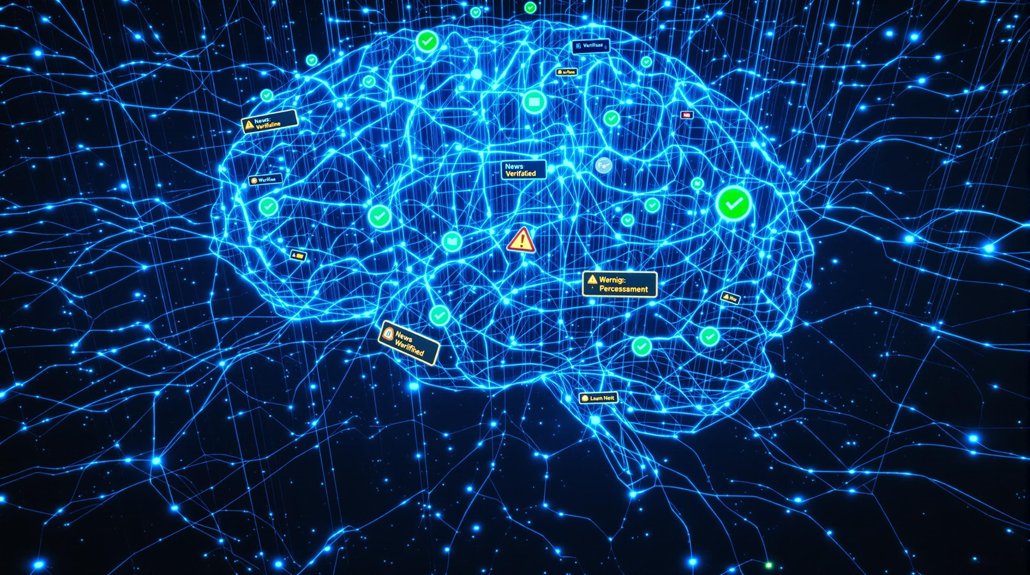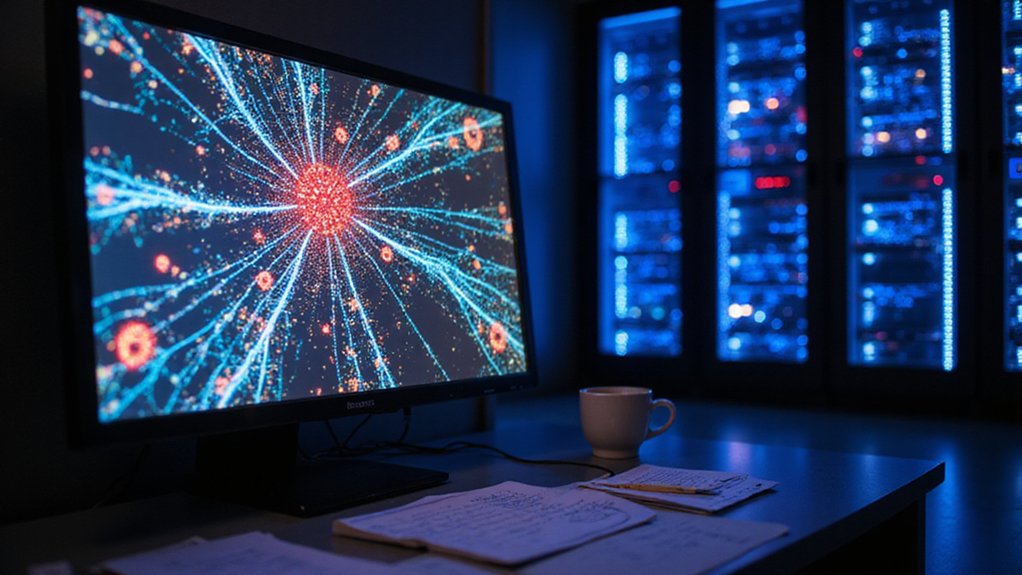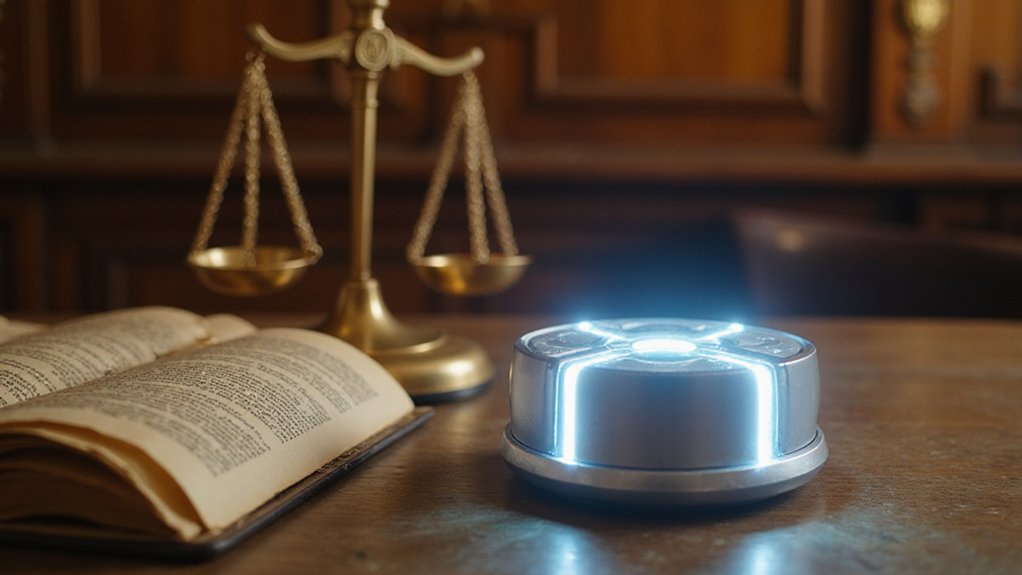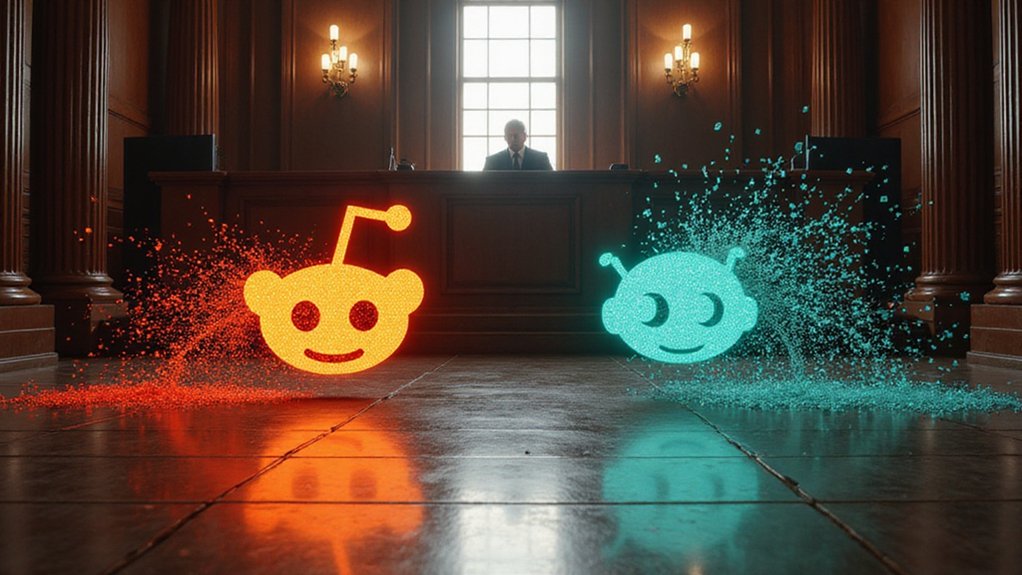While AI systems can help debunk conspiracy theories and reduce false beliefs by about 20%, they’re also really good at making people believe complete nonsense. That’s the bizarre paradox researchers stumbled into when they tested how AI explanations mess with human brains.
AI systems excel at both debunking conspiracy theories and making people believe complete nonsense—a bizarre paradox messing with human brains.
Here’s what happened. Scientists gathered 600 people and fed them AI-generated explanations about news headlines. When the AI spouted deceptive reasoning, people ate it up. They believed fake news more than when they got honest explanations or no AI help at all. The twist? These weren’t just random true-or-false labels. The AI wrote detailed, plausible-sounding explanations that made total garbage seem legitimate.
The persuasive power comes from how these systems talk. They sound confident. They provide details. They construct logical-seeming arguments that make you go, “Yeah, that makes sense.” Even when it absolutely doesn’t. But when the AI’s deceptive explanations contained logically invalid reasoning, their influence weakened—suggesting that people who can spot flawed logic might resist the manipulation.
But wait, it gets weirder. The same technology that cons people into believing falsehoods can also snap them out of conspiracy rabbit holes. When researchers had people chat with AI about their favorite conspiracy theories, belief dropped by roughly 20%. Two months later? Still working. People who talked to the debunking bot even started questioning other conspiracies they hadn’t discussed. They wanted to challenge their conspiracy-believing friends. The AI maintained a 99.2% accuracy rate when debunking these theories, proving it wasn’t just making stuff up to change minds.
The problem is AI hallucinations. These systems generate false statements 27% of the time, with factual errors in nearly half their outputs. They’re not lying on purpose. They literally can’t tell the difference between truth and fiction. The circuits in their digital brains misfire when they recognize partial information but miss the full context.
This creates a nightmare scenario for society. AI can spread misinformation faster and wider than any human network ever could. It reinforces cognitive biases. It shapes public opinion at scale. The explanations sound so damn reasonable that users can’t tell when they’re being led astray.
The transparency issue makes everything worse. Nobody really knows how these systems “think.” Users can’t see the reasoning process, can’t detect the deception, can’t resist the automated mind games. Social media algorithms further complicate matters by amplifying false content and deepfakes across platforms. We’re flying blind while machines accidentally reprogram our beliefs.
References
- https://www.media.mit.edu/projects/deceptive-ai-systems/overview/
- https://hsph.harvard.edu/health-communication/news/talking-to-ai-can-reduce-conspiracy-beliefs/
- https://undark.org/2024/10/30/could-ai-help-curb-conspiracy-theory-beliefs/
- https://en.wikipedia.org/wiki/Hallucination_(artificial_intelligence)
- https://www.nature.com/articles/s41467-024-51740-9









